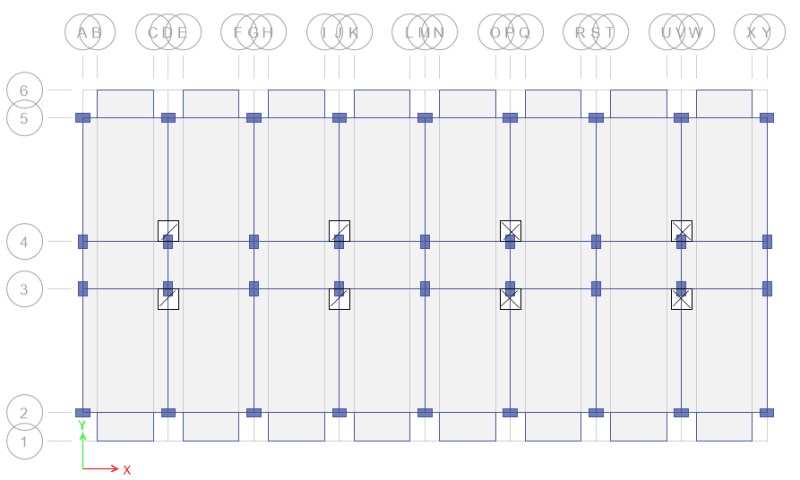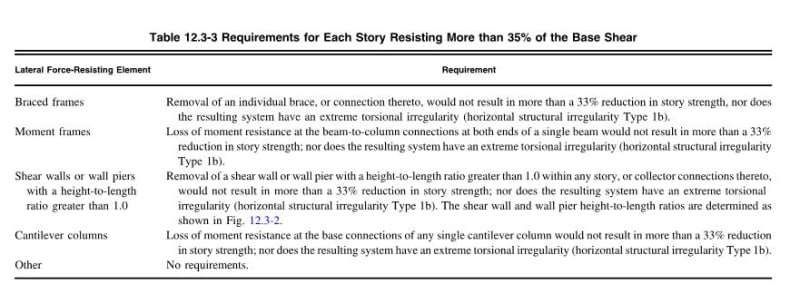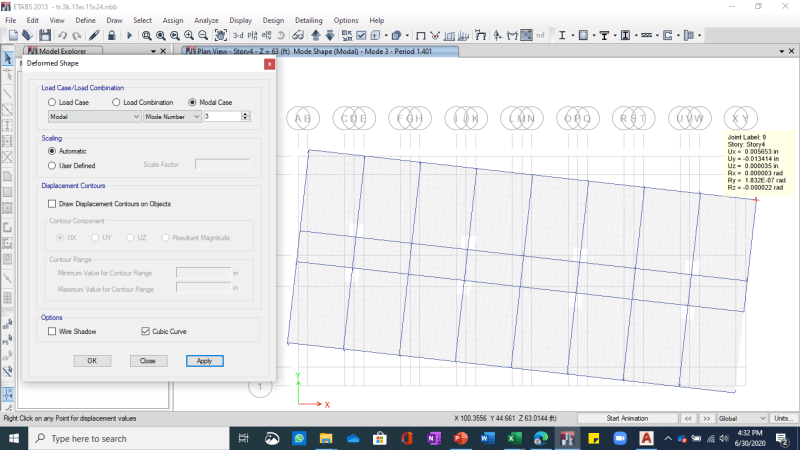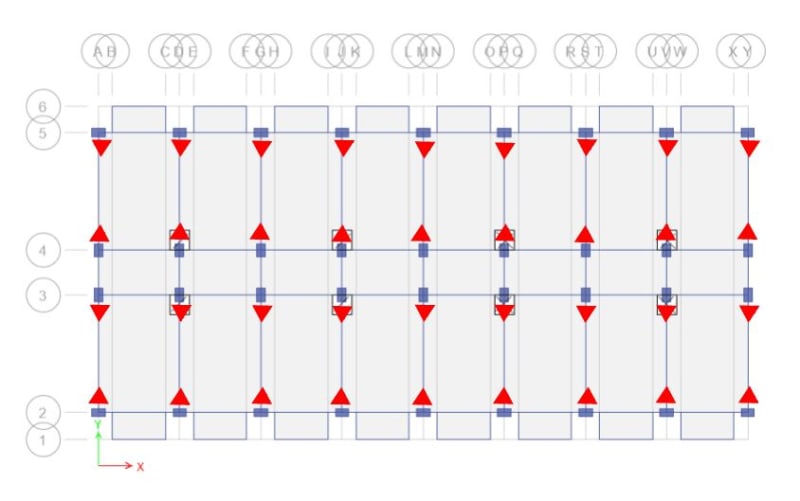Osama said:
Once again thank you for such a comprehensive reply.
You're most welcome Osama, it's an important question.
Osama said:
So if I have a 4 story building with 3 bays in short direction then my n would be 4*4=16, right? or 4. If I am wrong then please elaborate 'n'?
You'd do the calculation floor by floor. With reference to the sketch below:
1) I wouldn't count the beams over the corridor as moment frame beams but that is probably a discussion for another thread. Still, I'll leave those out here.
2) I count 18 moment frame beams and 26 moment frame beam to column joints in the plan below. So n = 36
3) 2/n = 2/36 = 5% which is much, much,
much less that 33%.
4) With your very well distributed, and highly symmetric lateral system here there's zero chance that the removal of any one beam will result in a torsional irregularity much less an
extreme torsional irregularity.
It's important to recognize that the particular lateral system that you're using here is:
1)
Extraordinarily redundant and;
2) About as torsionally regular as they come.
The redundancy penalty is really meant for the kind of modern building that gets built in North America and elsewhere where your lateral system consists of just a few isolated elements, something like:
a) An external stair shaft at one end.
b) A steel K-brace straddling some windows at the other end.
c) A chimney stuffed full of dead cats somewhere in the middle.
Your building ain't
that. Not by a long shot.
If every column in every building were part of a bi-directional moment frame, as is the case with your building, there wouldn't even be such a thing as a redundancy factor. It would be a pointless waste of human effort.







